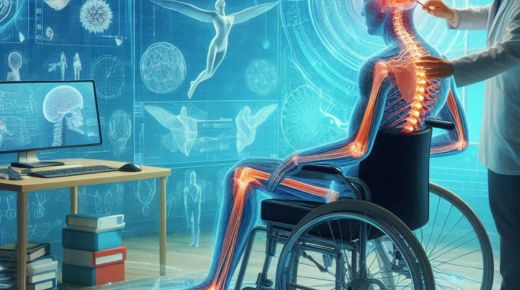
Innovative Rehabilitation Approaches for Cerebral Palsy
Cerebral Palsy (CP) is a lifelong condition that affects movement, muscle tone, and posture due to abnormal brain development or damage during early stages of life. For individuals living with CP, rehabilitation is essential for improving mobility, muscle control, and independence. In recent years, advances in cerebral palsy rehabilitation have led to innovative CP treatments that offer new hope for better management of symptoms and enhanced quality of life. This article explores some of the latest new therapies for CP that are transforming rehabilitation for individuals with cerebral palsy.
1. Robotics-Assisted Therapy
One of the most exciting advancements in cerebral palsy rehabilitation is the use of robotics-assisted therapy. This innovative approach involves the use of robotic devices that help patients practice repetitive movements, which are key to improving motor function and strength. Robotic systems can assist with gait training, helping patients with CP relearn how to walk or improve their walking patterns.
For example, robotic exoskeletons support the patient’s body while guiding their legs through walking movements. Over time, these repeated actions can improve muscle coordination and strengthen the muscles needed for walking. Robotics-assisted therapy provides a high level of precision, allowing therapists to target specific movements, adjust the intensity of the exercises, and monitor progress in real-time. This technology is particularly beneficial for children with CP, as early intervention with robotic therapy can lead to significant improvements in mobility.
2. Virtual Reality (VR) Therapy
Virtual reality therapy is another cutting-edge approach gaining traction in CP rehabilitation. VR therapy uses immersive digital environments to engage patients in therapeutic exercises that focus on improving balance, coordination, and motor skills. These virtual environments can simulate real-world activities, such as walking through a park or reaching for objects, creating a fun and interactive way for patients to work on physical challenges.
One of the advantages of VR therapy is its ability to keep patients engaged and motivated, especially children. By turning rehabilitation exercises into a game-like experience, patients are more likely to participate actively in their therapy sessions, which can accelerate progress. VR therapy also provides a safe and controlled environment where patients can practice movements without the risk of injury.
3. Functional Electrical Stimulation (FES)
Functional Electrical Stimulation (FES) is an innovative therapy that uses electrical impulses to stimulate muscles, helping them contract and perform movements that patients with CP may have difficulty doing on their own. FES is particularly effective in improving mobility, muscle strength, and coordination.
During an FES session, electrodes are placed on the skin over specific muscle groups, and controlled electrical pulses stimulate the muscles to contract. This helps patients practice functional movements, such as walking or grasping objects, by engaging the muscles that are weakened or impaired due to CP. FES is often used in conjunction with physical therapy to enhance the effectiveness of traditional exercises, leading to greater improvements in motor control.
4. Stem Cell Therapy for CP
Stem cell therapy is a promising and rapidly evolving field in the treatment of cerebral palsy. Stem cells have the potential to regenerate damaged tissues, including those in the brain. While still in the experimental stages, early research suggests that stem cell therapy may help reduce the severity of CP symptoms by repairing the damaged areas of the brain that affect motor function.
In clinical trials, stem cells are injected into the body, where they can potentially promote brain repair, reduce inflammation, and improve neuroplasticity—the brain’s ability to adapt and form new neural connections. Although more research is needed to determine the long-term effectiveness and safety of stem cell therapy for CP, this approach holds great potential for changing the future of CP treatment.
5. Aquatic Therapy
Aquatic therapy is a therapeutic approach that involves performing exercises in a pool. The buoyancy of water reduces the impact on the body, making it easier for individuals with CP to move and perform exercises that may be challenging on land. Water supports the body’s weight, allowing patients to improve their range of motion, strengthen muscles, and practice movements with less pain and resistance.
The resistance provided by water also helps build muscle strength and improve balance. Aquatic therapy is particularly beneficial for individuals with CP who experience muscle tightness and spasticity, as the warm water can relax muscles and reduce stiffness, making it easier to perform movements. Aquatic therapy offers a fun and engaging way to improve physical function and can be adapted to the individual’s specific needs.
6. Constraint-Induced Movement Therapy (CIMT)
Constraint-Induced Movement Therapy (CIMT) is a rehabilitation technique designed to improve the function of a weaker limb, usually an arm, by encouraging its use. In patients with CP who experience hemiplegia (paralysis on one side of the body), the stronger limb may become dominant, while the weaker limb is underutilized. CIMT involves temporarily restricting the use of the stronger limb, forcing the weaker limb to perform daily tasks and activities.
Through repeated use, the weaker limb gains strength and function, helping to restore balance and coordination between the two sides of the body. CIMT has shown positive outcomes in improving hand and arm function in children with CP, and it can be combined with other therapies for even greater results.
The field of cerebral palsy rehabilitation is rapidly advancing, with innovative CP treatments offering new opportunities for individuals to improve their mobility, independence, and quality of life. From robotics-assisted therapy and virtual reality to emerging treatments like stem cell therapy, these new therapies are transforming how patients with CP manage their symptoms and achieve their rehabilitation goals.
As technology and research continue to evolve, these cutting-edge approaches provide hope for better outcomes and a brighter future for individuals living with cerebral palsy. For families and patients seeking the most effective treatments, exploring these innovations with a skilled rehabilitation team can make a significant difference in their journey toward improved health and independence.
It will be a good idea to think about your immune system and quick rehab after a trauma. Search for vitamins for your stomach and immune system or detox products.

